A retrospective analysis of ethnic and gender differences in alcohol consumption among emergency department patients: a cross-sectional study
- PMID: 26419652
- PMCID: PMC4589191
- DOI: 10.1186/s12873-015-0050-5
A retrospective analysis of ethnic and gender differences in alcohol consumption among emergency department patients: a cross-sectional study
Abstract
Background: Previous studies of alcohol use have recognized several trends in consumption patterns among gender and age yet few have examined ethnic differences. This study examines the intra- and inter-ethnic differences in alcohol consumption among a population of patients seen in the emergency department.
Methods: This is a cross-sectional study conducted in the emergency department in a large urban setting. Information on drinking behavior and ethnicity was collected using the Computerized Alcohol Screening and Brief Intervention (CASI) tool. We explored differences in drinking patterns using a multivariate multinomial logistic regression model.
Results: We analyzed the drinking habits of 2,444 patients surveyed between November 2012 and May 2014. The results indicate that when compared to non-Hispanic whites, Asians have the lowest odds of drinking within normal limits or excessively, followed by other Latinos, and Mexicans. Age and gender consistently showed statistically significant associations with alcohol-use. The odds of drinking within normal limits or excessively are inversely associated with age and were lower among females. The predicted probabilities show a marked gender-specific difference in alcohol use both between and within ethnic/racial groups. They also highlight an age-related convergence in alcohol use between men and women within ethnic groups.
Discussion: The results of this study show intra-racial/ethnic variability associated with sex and education. The highlighted differences within and between ethnic groups reinforce the need to use refined categories when examining alcohol use among minorities.
Conclusion: The results of this study confirm some alcohol consumption trends among ethnic minorities observed in literature. It provides empirical evidence of the marked gender differences and highlights an age-related convergence for gender-specific alcohol use. Health-care personnel should be aware of these differences when screening and counseling.
Figures
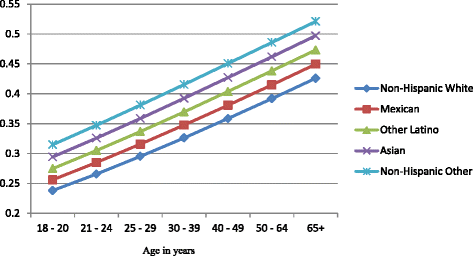
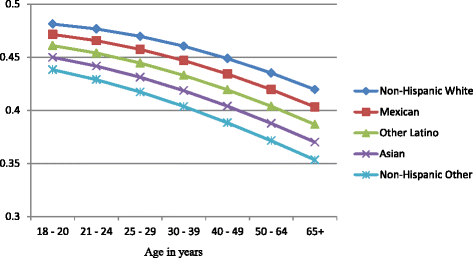
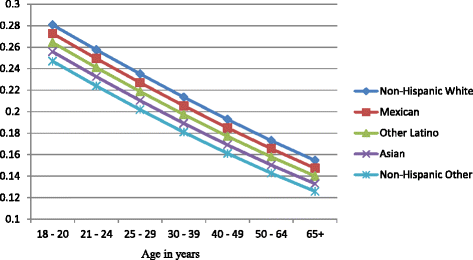

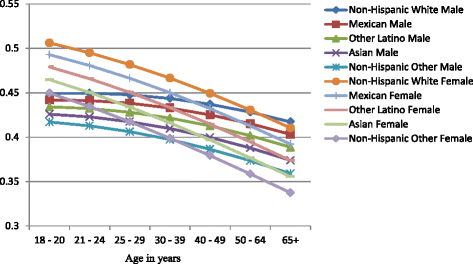
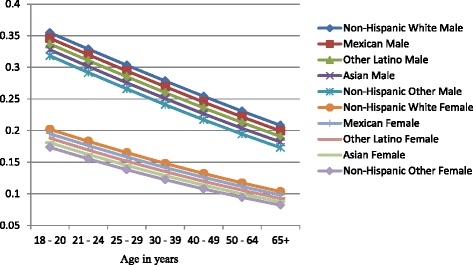
References
-
- World Health Organization Action needed to reduce health impact of harmful alcohol use. Cent Eur J Public Health. 2011;19(1):41,45. - PubMed
-
- World Health Organization. Alcohol and injury in emergency departments: summary of the report from the WHO Collaborative Study on Alcohol and Injuries. 2007.
-
- Bernstein E, Bernstein J, Feldman J, Fernandez W, Hagan M, Mitchell P, Baird J. An evidence-based alcohol screening, brief intervention and referral to treatment (SBIRT) curriculum for emergency department (ED) providers improves skills and utilization. Substance abuse. 2007;28(4):79. doi: 10.1300/J465v28n04_01. - DOI - PMC - PubMed
Publication types
MeSH terms
Grants and funding
LinkOut - more resources
Full Text Sources
Other Literature Sources
Medical

